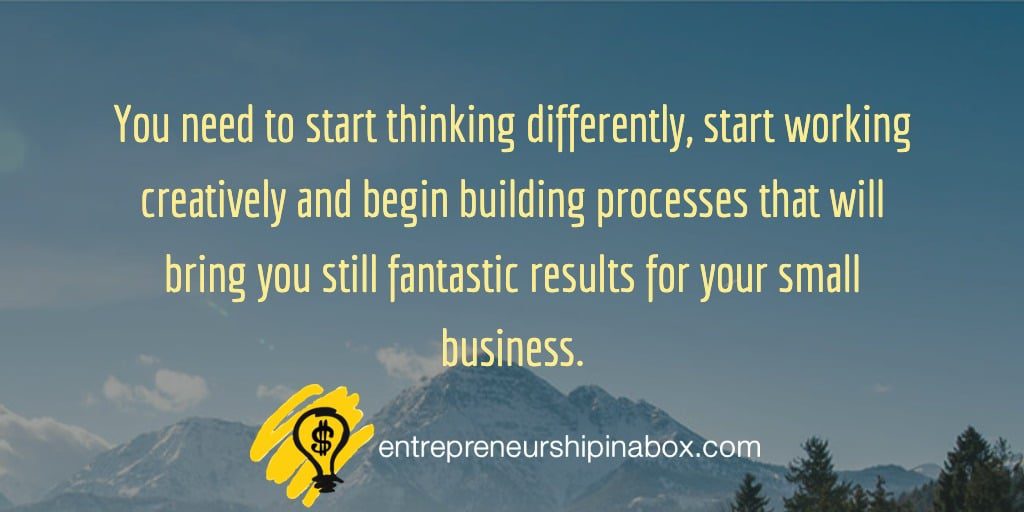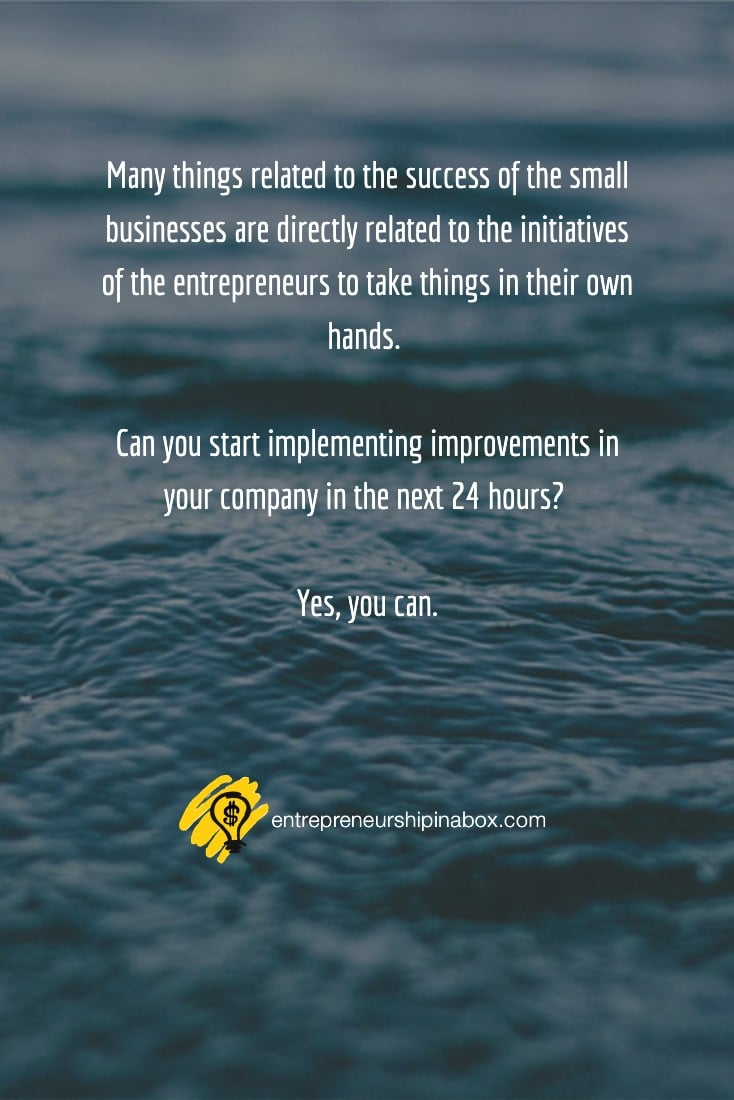You will need to improve your business regularly. Without improvements, you will risk losing market share, income, and profitability at all. So, here is your improvement toolbox to help you start improving your business in the next 24 hours.
The risk of not taking specific action steps to improve your small business is much higher than the risk if you try to improve something and fail.
Failing in improvements and business actions in general, is one crucial aspect that increases your business potential energy. Failing means that you and your company learn something new. Because of that, the next improvement steps will bring much higher results for the company.
Many things related to small businesses’ success are directly related to the entrepreneurs’ initiatives to take things into their own hands. Can you start implementing improvements in your company in the next 24 hours? Yes, you can. The only thing you will need is a systematic approach. An approach that will involve you and your whole company in the continuous improvement process. You don’t need to take significant steps toward the results. You need to start thinking differently and start working creatively. It would also be best to start building processes that will bring you still fantastic results for your small business.
Let’s see how you can schedule through hours a simple but powerful improvement process in your company.
Hour 1: Prepare Your Improvement Toolbox
What does means improvement toolbox? Simply said, an improvement toolbox can be anything that can be used in your efforts to implement improvements in your company.
As an entrepreneur, you need such a toolbox. What will need to be in this improvement toolbox? It depends on you, your business, the market, and the industry where your company operates. I want to share a general approach that I usually give as a piece of advice to entrepreneurs.
- First, you will need tools related to the idea generation process as a part of your improvement toolbox. Here you can have different techniques that can be used as brainstorming sessions, brainwriting, meetings, process explorations, customer surveys, and so on.
- Next, you will need the problem-solving toolbox. This part of your improvement toolbox will contain tools that you will use for timely discovering problems in your business.
- You will also need data collection tools. These tools can be your internal databases and external information related to the problem or the subject of improvement.
- Also, you will need tools related to the development of the improvement process. Here can be used tools such as process mapping, six sigma, benchmarking, re-engineering, etc.
When you have everything that you will need in the improvement process, you can go to the next hour in the implementation of the improvement process in your company.
Hour 2: Analyze Your Business Metrics
Spend your second hour to analyze the current metrics that you are using to measure the performance of your business processes or the business overall.
What does it mean?
[click_to_tweet tweet= “Many things related to the success of the small businesses are directly related to the initiatives of the entrepreneurs to take things in their own hands. Can you start implementing improvements in your company in the next 24 hours? Yes, you can.” quote= “Many things related to the success of the small businesses are directly related to the initiatives of the entrepreneurs to take things in their own hands. Can you start implementing improvements in your company in the next 24 hours? Yes, you can.” theme=” style2″]
First, you will want to ensure that the metrics currently used are the right metrics. Metrics required for the next decision that you will need to make in the whole process. So, start asking yourself the following questions:
- What metrics am I currently using to measure the performance of my company?
- Are these metrics the right metrics for me?
- Also, are these metrics that give me valuable results about my decision-making process?
- Are there some other metrics that aren’t currently used but can give a valuable picture of my company’s performance?
Answering these questions, you will list the most important metrics that you will need to analyze in the next hour.

Hour 3: Analyze Your Business Systems and Processes as a Part of Your Improvement Toolbox
In the third hour, you will need to collect all necessary data required for the list of the metrics you have defined in the previous hour.
Start analyzing your company’s performance. You will discover possible problematic systems and processes or possible ideas where you can improve something.
Hour 4: Make a List With All the Systems and Corresponding Processes Responsible For the Low Metrics
The fourth hour is the hour in which you and your team will list all possible systems and corresponding processes that will need to be part of the improvement cycle.
Call your team members and talk about already defined problems. Also, talk about possible systems that will need to be on the list for the improvement process.

Hour 5 – 6: Brainstorm Possible Improvement Ideas With Your Team
The next two hours or fifth and sixth hours are related to the brainstorming session for the possible ideas about improving already listed systems and processes or solve already discovered problems.
Usually, the work in these two hours will lead to the concrete definition of the problems in each of the earlier defined systems that will need to be solved.
💡 Warning
Hour 7-9: Solution Brainstorming Session With Your Team
These three hours, your job will be to work on brainstorming different solutions related to the problems defined in the previous two hours.
You already have systems and processes where you will need to intervene to improve them. You have already defined problems that will need to be solved. Also, you have defined the solutions that will bring improvements to your company. Now, it is time for the brainstorming session. You and your team will brainstorm different solutions for each of the problems.
Hour 10 – 11: Analyze Proposed Solutions and Chose the Best as a Part of Your Improvement Toolbox
In the next two hours, you and your team will need to analyze the proposed solution to make a list of the best solutions that will need to be implemented if you want required improvements in your company.
Hour 12-15: Prepare Plan For Selected Solution Implementation
Now, we are close to the implementation of the improvements. Still, before we start, there is a strong need to have a great plan. You need a plan that will increase the possibilities for implementing already chosen solutions for the problems.
Hour 16-23: Implement Selected Solutions
After you finish the planning process for the improvements, in the next eight hours, you and your team will implement the already prepared plan for improvements solving the biggest problems in your company in the right way.
Hour 24: Check If Everything is Implemented as Planned
The last hour of these 24 hours process, you will need to spend checking the results from what you have already implemented with the improvement targets you have at the beginning of the process. Are these efforts bring improvements in the performances of your company? If this is true, you can start with the next improvement cycle. If it is not true, you will need to spend the next 24 hours to find why this is happening and repeat all previous steps.
Good luck with your improvement efforts.



